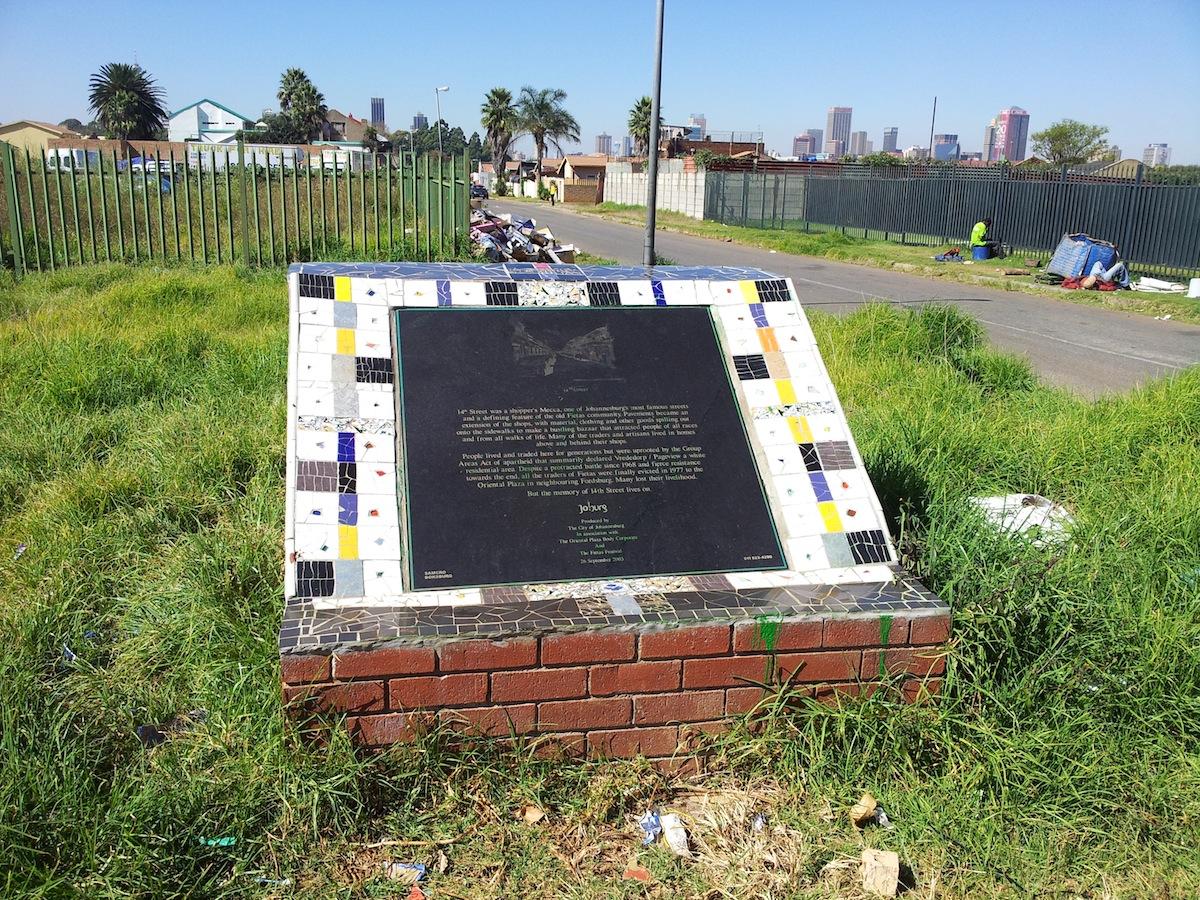
The “old Malay camp” dates back to the South African Republican period when the Kruger government established the area in 1893/4 for a predominantly Coloured and Malay community. When the neighbouring ‘Coolie Location’ was evacuated and subsequently burnt to the ground in 1904 (ostensibly in response to the outbreak of bubonic plague) many displaced Indian families resettled in the Malay location.
Over time the Malay location would become a predominantly Indian area. With its neighbouring suburb Vrededorp – a freehold area established for poor Afrikaners – the area became a lively multi-cultural community accommodating people from all sections of the population including Indians, whites, coloureds, Africans, Malay families and also a Chinese community.
Although officially renamed Pageview – for most South Africans – this was simply ‘Fietas’. Central to community life was the commercial strip of 14th Street well known for its haberdasheries, tailors, clothes, soft goods and other traders. According to Flo Bird, it was the city’s busiest shopping strip drawing shoppers from all walks of life. 14th Street consisted of rows of one and two storey mixed-use buildings where retail would often be on ground level with upper level residential quarters. Trading spilled out onto the pavements protected by colonnaded verandas and balconies. This brought a uniform architectural character to the streetscape.
Following the Group Areas act of 1950, the area was proclaimed a white area. However, in the face of heavy opposition the first eviction notices were only served in 1967. This would result in a bitter fight with authorities. In 1975 many residents and businesses were bulldozed with traders relocated to the newly constructed Oriental Plaza in Fordsburg and residents relocated to Lenasia.
Luckily, however a number of residential houses, at least one trading store on 14th Street and a number of important social and cultural facilities survived including important mosques – such as the magnificent Malay Mosque (c. 1914; sadly demolished some years ago), an Islamic school where Afrikaans was purportedly first scripted in Arabic, churches, schools (including the first Indian girl school in Johannesburg) and sporting facilities.
In light of apartheid resistance, the community also had strong associations with important historic figures including Suleiman M Nana, Father Sigamoney, Molvi Saloojee, Adam Asvat, Hurley Assat, Dr Essop Jassat, writers, Peter Abrahams and Ahmed Essop to name a few.
Since the end of apartheid the remaining heritage of Pageview (as with neighbouring Vrededorp) continues to diminish in the face of unresolved land restitution claims, legal and illegal demolitions, poor urban management, illegal occupation (often involving overcrowding and insanitary conditions) and general crime, grime and general lack of investment.
While an Urban Development Framework (UDF) for Pageview and Vrededorp was developed in 2007 – the development vision did not materialise. According to community sources this has been as a result of a protracted land restitution processes that have still not been resolved, official neglect (appeals have been made in the past to both the Mayor of Johannesburg and the Premier of Gauteng with no tangible results) as well as a failure to implement the UDF (some claim this was because funds were diverted to the City’s 2010 projects).
Similarly, a major public art piece installed in the subway linking Pageview with Fordsburg has fallen into disrepair while the public upgrades implemented to better connect these communities are no longer safe to use.
Lastly, given the absence of public sector investment and upkeep of the public environment – coupled with continued uncertainty about whether land claims will ever be resolved – private land owners continue to delay reinvestment in their properties. In addition, the large informal community continue to suffer from the lack of ablution facilities and basic service delivery requirements.
Extracts from the nomination form for the 2016 most endangered heritage site campaign.
Click here to view on google maps.
Please use this thread to add background and updates.
Comments will load below. If for any reason none appear click here for some troubleshooting tips. If you would like to post a comment and need assistance click here. Irrelevant and inappropriate comments will be removed by the moderator. Only add background and updates to the tracking threads.
